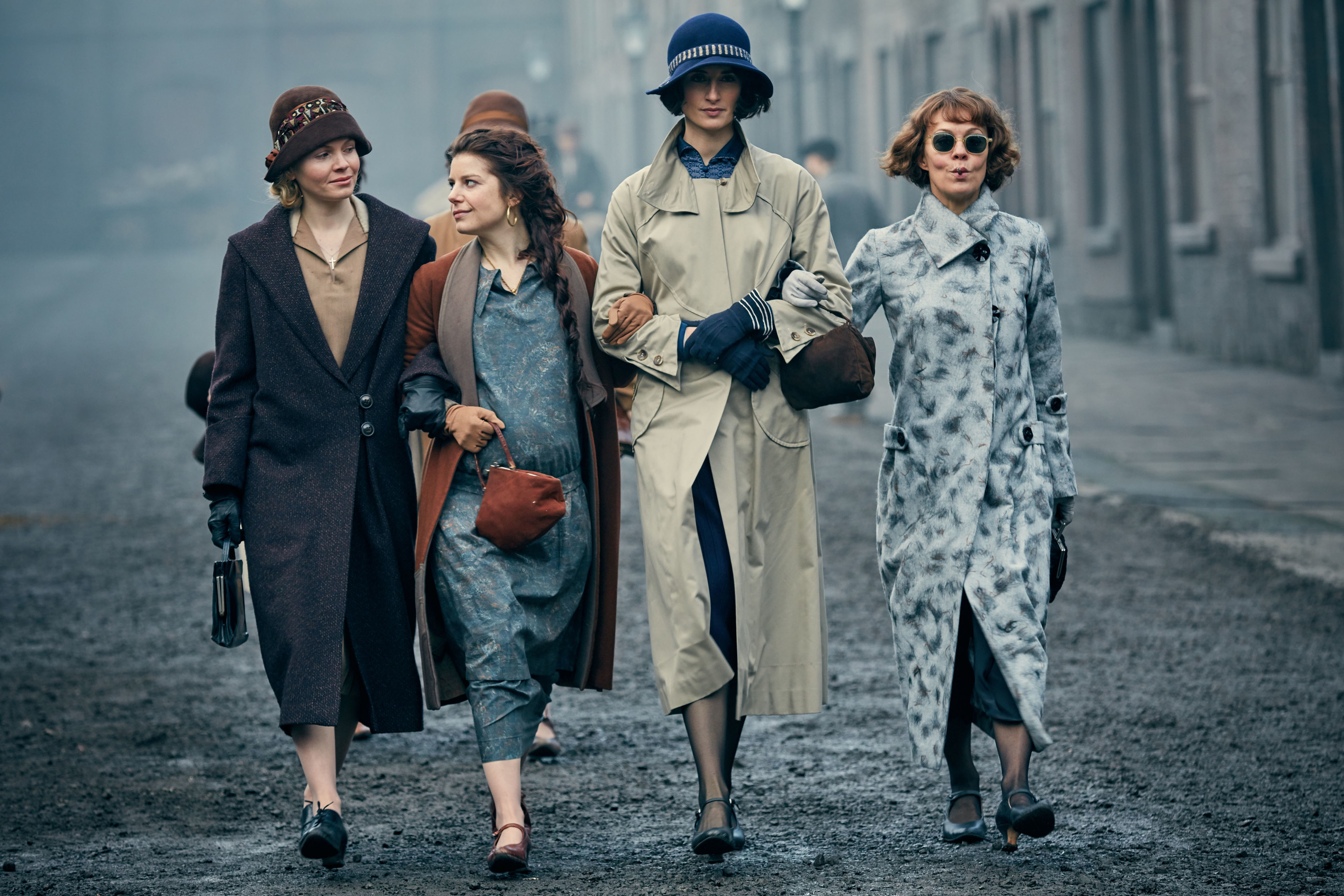
WHEN Peaky Blinders began four years ago, I admit I wasn’t a fan. Back in those days, it looked like another familiar tale of dodgy folk and dodgier history, with a cast struggling to make their Birmingham accents sound brooding and bolshie.
Saddled with the silliest group name since Kajagoogoo, this looked like a Brummie Boardwalk Empire, set immediately after the First World War, with vintage car chases across the Black Country that weren’t much faster than racing milk floats.
Worst of all, the male characters seemed to carry most of the action, with women treated as convenient plot points to be seduced, beaten or betrayed.
Scarcely an episode passed without an exquisitely-coiffed woman gazing at Cillian Murphy like a Basset Hound eyeing up a forbidden bone.
Well why not: the Peaky Blinders boss is a fine-looking man, despite being emotionally traumatised by his wartime experiences, plus the most hideous haircut this side of your parents, a pair of shears and a pudding bowl.
Gradually, however, things changed and Peaky won me over with its stylish bloodshed, addictive storylines, quirky contemporary soundtrack, and a roster of female characters who have now come into their own.
When Thomas Shelby was in France, it was Aunt Pol (the fine, fascinating Helen McCrory) who held the fort at home. I love Polly Gray. She’s like a pirate queen. As tough as nails, yet supremely broken.
And Peaky loves women like Polly, who kept families together, earned their own keep and got their first taste of freedom and power while their men were away.
Polly has lost children, killed a man, and drinks like someone just called last orders.
Since escaping the hangman’s noose at the last possible moment she has become downright terrifying: the kind of woman who would feed you to the pigs without a second thought.
Then there’s Tommy’s sister Ada (Sophie Rundle), whose finest hour remains the moment in the first series where she deliberately disrupted a gangland showdown by pushing her pram between the two warring tribes and challenging them to shoot. Even Tommy’s girlfriends aren’t as soft as I’d first feared. May Carleton (Charlotte Riley) is super-posh, and insanely successful in her own right, but seems destined to be forever overshadowed by Tommy’s other big pash, Grace (Annabelle Wallis).
Grace didn’t have a promising start; in the first episode she was a barmaid with a singing voice that made macho men weep, or at least stare moodily into their pints.
There was a dreadful possibility that Grace had been written in as some kind of musical interlude between fights, but in the course of the show she turned out to be a spy, fell for Tommy anyway, broke his heart and shot her boss.
Grace would be Exhibit One for the case that Peaky women can be as selfish, assertive, seductive and deadly as the men.
New characters are important to Peaky, a show in which no one can count on seeing their name on the credits come series end, and this fourth run features Oscar winner Adrien Brody as a gangster with an accent as thick as tomato paste, and Game of Thrones star Aidan Gillen as a hitman.
However, the most eye-catching debut has been Charlie Murphy as real-life communist trade union activist Jessie Eden, first spotted applying her lipstick in the men’s loos, since “you don’t have a women’s lavatory on the second floor – because no women get this far up.”
Not that the women of Peaky Blinders are much of a sister act. Just this week Ada took Jessie down a peg or two – but they all come with an ahead-of-their time independent spirit.
While the cast is largely male, it has become a show about women and the huge changes they went through between the wars.
And if Tommy Shelby ever does end up pushing up daisies, then it’s not inconceivable that a Shelby woman could take care of business, and keep a hit show on the road.

Enjoy the convenience of having The Sunday Post delivered as a digital ePaper straight to your smartphone, tablet or computer.
Subscribe for only £5.49 a month and enjoy all the benefits of the printed paper as a digital replica.
Subscribe